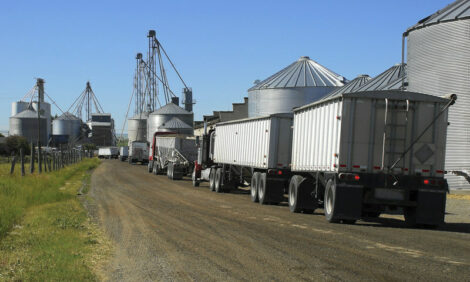



Ethanol, Corn To Weigh Heavily On Future Of Livestock Industry
US - Dr. David Anderson, Extension livestock marketing economist, gave an overview of the interaction between renewable energy production and the livestock industry at the recent 2007 Texas Ag Forum in Austin.Livestock producers should keep these possibilities in mind as ethanol production grows across the country, Anderson said:
- Higher feed costs.
- Feeder cattle and calf prices adjusted to the price of corn.
- Reduced production in terms of cattle weights and profitability.
- A livestock industry that is less competitive in the world market.
The boom in the number of ethanol plants is primarily centered in the Corn Belt, Anderson said, leading to large supplies of distiller's grains, the byproduct which is used primarily as livestock feed.
"Supply of distiller's grains is expected to increase to well over 30 million tons per year," he said. "At that rate of growth, supplies will exceed demand, leading to lower distiller grains relative to corn."
For each 56-pound bushel of corn used to make ethanol, about 17 pounds of distiller's grains is produced, Anderson said.
"While the starch is taken out of the corn to make ethanol, the remaining nutrients are concentrated in the distiller's grains," he said. "It has more protein and energy than corn, per pound. The energy comes from the fat that was in the corn."
Portions of phosphorus, potassium and sulfur are increased as well, he said, noting if the corn used to make ethanol had aflatoxin, "it too is concentrated three times in the resulting distiller's grains."
Thus, distiller's grains "presents a number of management issues related to handling and storing," Anderson said.
"It's a highly variable product," he said. "At that rate of growth, supplies will exceed demand, leading to lower distiller grains prices relative to corn."
Overall, Anderson predicts livestock producers will see higher-priced feed and "lower returns and reduced profitability."
"It results in a less competitive livestock industry in world markets and regionally in the U.S. It will also result in higher food prices for consumers," Anderson said.
Source: Science Daily
Livestock producers should keep these possibilities in mind as ethanol production grows across the country, Anderson said:
- Higher feed costs.
- Feeder cattle and calf prices adjusted to the price of corn.
- Reduced production in terms of cattle weights and profitability.
- A livestock industry that is less competitive in the world market.
The boom in the number of ethanol plants is primarily centered in the Corn Belt, Anderson said, leading to large supplies of distiller's grains, the byproduct which is used primarily as livestock feed.
"Supply of distiller's grains is expected to increase to well over 30 million tons per year," he said. "At that rate of growth, supplies will exceed demand, leading to lower distiller grains relative to corn."
For each 56-pound bushel of corn used to make ethanol, about 17 pounds of distiller's grains is produced, Anderson said.
"While the starch is taken out of the corn to make ethanol, the remaining nutrients are concentrated in the distiller's grains," he said. "It has more protein and energy than corn, per pound. The energy comes from the fat that was in the corn."
Portions of phosphorus, potassium and sulfur are increased as well, he said, noting if the corn used to make ethanol had aflatoxin, "it too is concentrated three times in the resulting distiller's grains."
Thus, distiller's grains "presents a number of management issues related to handling and storing," Anderson said.
"It's a highly variable product," he said. "At that rate of growth, supplies will exceed demand, leading to lower distiller grains prices relative to corn."
Overall, Anderson predicts livestock producers will see higher-priced feed and "lower returns and reduced profitability."
"It results in a less competitive livestock industry in world markets and regionally in the U.S. It will also result in higher food prices for consumers," Anderson said.
Source: Science Daily


